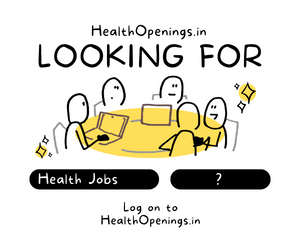In an era where technology shapes the contours of our lives, the healthcare industry has undergone a remarkable transformation with the advent of telemedicine. This innovative practice, characterized by remote healthcare consultations and diagnosis, has proven to be a game-changer, not only making quality medical services more accessible but also redefining the way we approach healthcare delivery. In this article, we delve into the multifaceted realm of telemedicine, exploring its benefits, the tools that drive its efficacy, real-world success stories, as well as the challenges and considerations that accompany its implementation.
Benefits of Telemedicine
At the heart of telemedicine lies its unparalleled ability to dismantle geographical barriers that have long restricted access to healthcare. Patients residing in remote and underserved areas can now access specialized medical expertise without the burden of arduous travel. This democratization of healthcare ensures that even those in the farthest reaches of the world can avail themselves of top-tier medical services, leveling the playing field and bridging the gap between urban and rural healthcare disparities.
Beyond geographical accessibility, telemedicine also serves as a powerful instrument in curbing healthcare costs. Traditional healthcare pathways often entail repeated physical visits, each accompanied by associated expenses. Telemedicine’s virtual framework eliminates the need for many in-person consultations, consequently reducing transportation costs and freeing patients from the constraints of time and distance. Additionally, telemedicine has the potential to lower hospitalization rates by enabling proactive monitoring and early intervention, ultimately saving both patients and healthcare systems significant financial resources.
Telehealth Platforms and Tools
Central to the efficacy of telemedicine are the technological tools that enable seamless virtual interactions between patients and healthcare providers. Video conferencing, a cornerstone of telehealth platforms, facilitates face-to-face consultations without the confines of physical proximity. This real-time, visual communication empowers physicians to visually assess patients, leading to more accurate diagnoses.
Secure messaging platforms, another integral component of telemedicine, allow patients to communicate with their healthcare providers asynchronously. This feature fosters continuous engagement, enabling patients to seek clarifications, share updates, and receive guidance conveniently.
Remote monitoring tools, often coupled with wearable devices, enable healthcare professionals to monitor patients’ vital signs and health metrics remotely. This is particularly transformative for chronic disease management, as it allows for proactive interventions based on real-time data, mitigating the risk of complications and hospitalizations.
Real-World Telemedicine Examples
The impact of telemedicine extends far beyond theoretical realms, finding tangible expression in real-world success stories. One compelling application is remote patient monitoring, a boon for individuals with chronic conditions. Diabetic patients, for instance, can have their blood glucose levels monitored remotely, alerting healthcare providers to deviations from the norm and enabling timely adjustments to treatment plans.
In the realm of mental health, telemedicine has emerged as a lifeline for individuals seeking counseling and support. Virtual mental health sessions offer a safe and private environment for patients to discuss their concerns, ensuring that mental health services are not restricted by physical barriers.
Telestroke programs offer yet another illustration of telemedicine’s transformative potential. In cases of stroke, time is of the essence, and neurologists can remotely assess patients via video conferencing to diagnose strokes and recommend immediate interventions. This rapid response can significantly improve patient outcomes and reduce the risk of debilitating consequences.
Challenges and Considerations
While the prospects of telemedicine are promising, it is not without its challenges. Regulatory frameworks and licensure requirements vary across states and countries, presenting hurdles for seamless virtual healthcare delivery. Additionally, insurance coverage policies may lag behind the rapid evolution of telemedicine, potentially limiting its accessibility for certain patient populations.
Reliable internet connectivity stands as a fundamental requirement for telemedicine to function optimally. Rural areas with limited access to high-speed internet may find themselves disproportionately excluded from the benefits of telemedicine. Moreover, ensuring that patients possess the digital literacy necessary to navigate telehealth platforms is a consideration that cannot be overlooked. Adequate education and support must be provided to ensure that all patients can harness the full potential of telemedicine.
Telemedicine’s impact on the healthcare landscape is nothing short of revolutionary. It has transcended the limitations of traditional healthcare models, ushering in an era of patient-centered, accessible, and cost-effective medical services. By breaking down geographical barriers and harnessing the power of technology, telemedicine offers a tantalizing glimpse into the future of healthcare delivery. As regulatory challenges are surmounted and technological infrastructure matures, telemedicine is poised to become an integral pillar of modern healthcare systems. Its potential to enhance patient outcomes, curb costs, and democratize healthcare underscores its status as a transformative force in the journey toward a healthier, more connected world.



